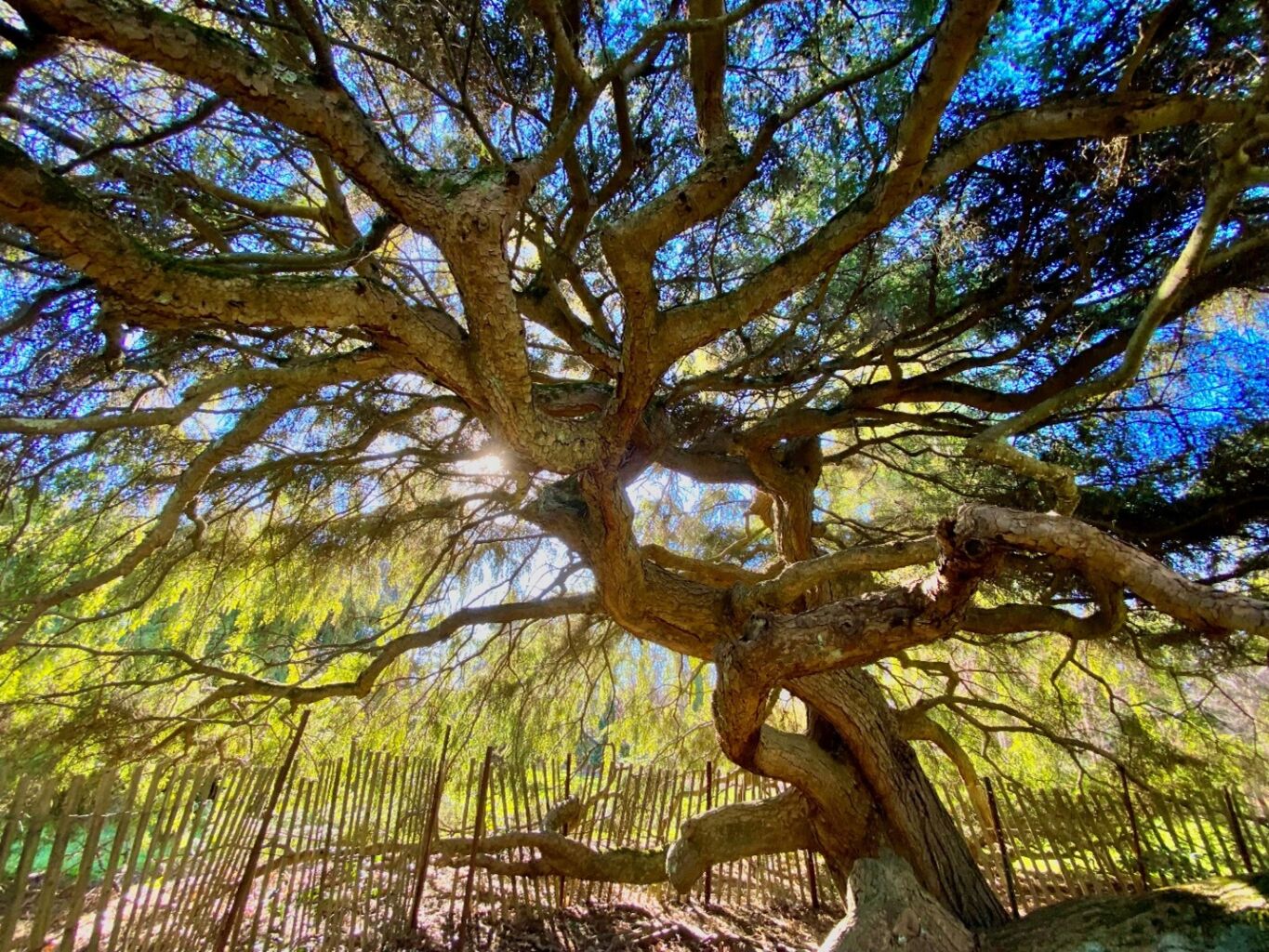Discovered in New York in the mid-nineteenth century, Sargent’s Weeping Hemlock, Tsuga canadensis ‘Sargentii,’ created quite a stir within the budding landscape architecture scene. With their weeping, layered branches and spreading habit, these trees can create a graceful dome ten to twelve feet high and up to forty feet wide.
The weeping hemlock is a mutant of the Canadian hemlock, Tsuga canadensis. Horticulturist and landscape gardener Henry Winthrop Sargent took a cutting of the original tree found in present day Hopewell Junction, in Dutchess County, New York, and thus began a new life for this variation of the hemlock tree. H. W. Sargent was a cousin of American botanist Charles Sprague Sargent, the first director of Harvard University’s Arnold Arboretum in Boston, and father of A. Robeson Sargent, who was also a landscape architect and horticultural expert. In 1913, when W.R. and Mai Coe acquired the Planting Fields property, they hired A. Robeson Sargent to serve as the project principal for the landscape design. Sargent is likely responsible for W.R. Coe’s interest in collecting rare plants to integrate into the Planting Fields landscape.
The Sargent’s Weeping Hemlocks at Planting Fields are unusually large and very beautiful. Discovered in one of the regions where American ornamental horticulture was first taking hold, the graceful weeping branches fit perfectly in the picturesque landscapes then being created in the Hudson Highlands and on Long Island. There has been speculation about the origin of the first tree to display the weeping mutation, but it is now believed to have been discovered by an old farmer, Jefferson Horton, on his Dutchess County property in the 1850s. H.W. Sargent was able to obtain a cutting from Horton’s tree and planted it on his own property, from which scions were taken and introduced into nurseries to eventually be sold starting in 1874.

Indigenous to North America, these slow-growing trees are irregularly shaped shrub forms of Canadian Hemlock, which is the dominant tree species on over 2.3 million acres of its native range. Canadian Hemlocks, also known as Eastern Hemlocks, were commonly used by indigenous Americans and Canadians as a medicinal plant to treat a variety of ailments and as a food additive, due to its high vitamin C content. Tsuga canadensis also plays an important ecological role as shelter for many animals including deer, ruffled grouse, and turkeys. It also helps to control water dynamics by regulating stream flow, moderating water temperature, and minimizing nutrient runoff within forests. Sargent’s Weeping Hemlock boasts the same short, flat, blunt, flexible needles found on Canadian Hemlocks and the same thick, ridged bark.
Planting Fields boasts two large specimens of Sargent’s Weeping Hemlock on the lawn outside the Camellia Greenhouse.
Rebecca Slagle, Historic Landscape Technician


Does this hemlock suffer from wooly Adelaido as the Canadian hemlock? The public should understand that the care of such a plant is difficult.
Sargent’s Weeping Hemlock is susceptible to attack from Hemlock Wooly Adelgid. These hemlocks are significant and historic to the plant collections at Planting Fields. They are monitored for any insect, disease, or other issues. If and when a problem is noticed, best management practices are used to address the situation.
Very interesting and informative. I want one! Would it thrive in Florida! Probably not.
Unfortunately, the farthest south Tsuga canadensis grows is in the Appalachian mountains in Georgia and Alabama!